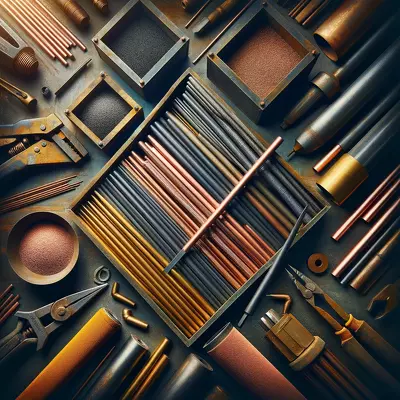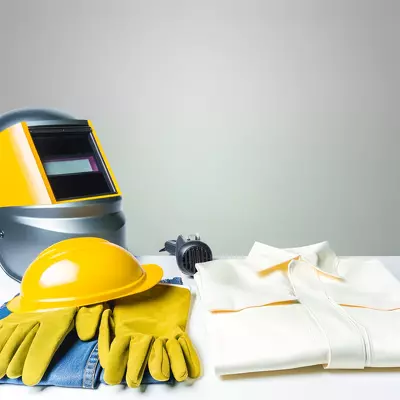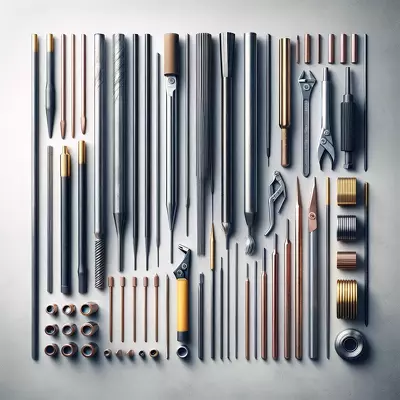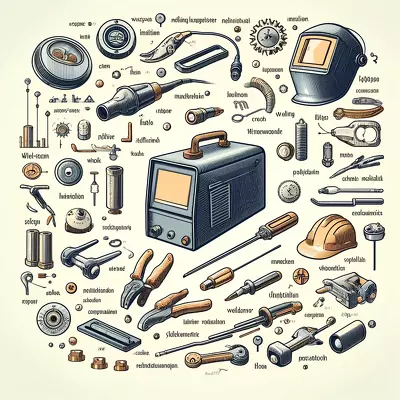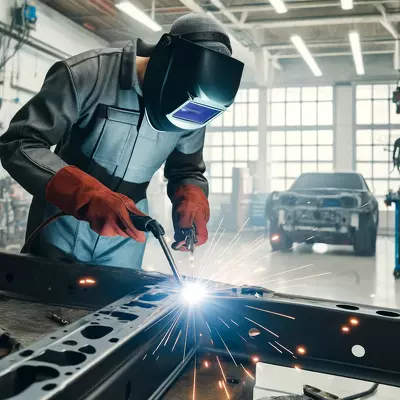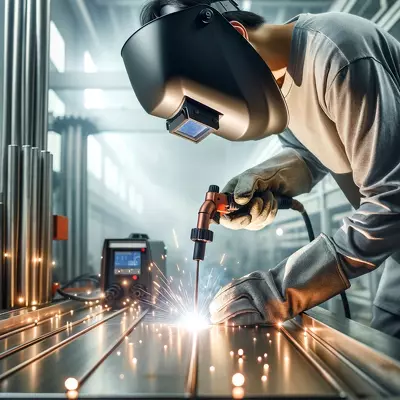The 6010 Welding Rod Decoded: Essential Insights for Professional Welders
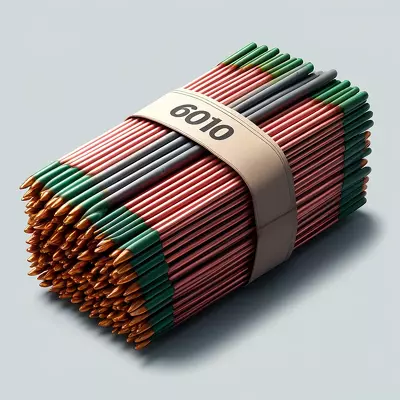
The 6010 welding rod is a staple in the toolkit of professional welders, known for its deep penetration and ability to produce strong, durable welds. Primarily used in pipe welding, this rod excels in fast-fill operations and on dirty or rusty metals, making it indispensable in construction and repair work where conditions are less than ideal. Its unique characteristics ensure reliable performance in challenging environments.
I. Introduction to the 6010 Welding Rod
A. Overview of the Rod’s Characteristics
The 6010 welding rod, recognized for its robust penetration capabilities, is a first-choice electrode for many welders facing challenging environments. Its design allows it to effectively handle poor metal conditions, such as rust or paint, which can impede the welding process. The electrode’s coating facilitates deep penetration into the metal, which is ideal for root pass welding and crucial for structural integrity.
B. Common Applications and Versatility
This electrode finds its place in a variety of tough welding situations. From outdoor constructions exposed to the elements to underwater repairs where precision and reliability are paramount, the 6010 welding rod proves its worth. It is particularly favored in vertical and overhead welding, thanks to its fast freezing slag, which helps maintain control over the weld pool in difficult positions.
II. Key Features of the 6010 Welding Electrode
A. Composition and Physical Properties
Constructed from a high cellulose sodium coating, the 6010 welding electrode is formulated to achieve deep penetration with a stable yet forceful arc. This composition not only enables effective welding on dirty or contaminated surfaces but also supports quick and reliable starts and re-starts, which are critical in continuous welding scenarios.
B. Benefits in Welding Operations
The electrode’s robust performance in adverse conditions makes it a reliable option for critical welds. Its ability to quickly penetrate contributes to less time on weld preparation and more on actual welding, enhancing productivity. The unique properties of the 6010 also reduce the likelihood of common welding defects, such as porosity or incomplete fusion.
C. Ideal Use Scenarios
Ideal scenarios for 6010 electrodes include joining pipes and tackling jobs in older structures where materials are often oxidized or mildly corroded. Its vigorous arc cuts through contaminants, making it a preferred choice for maintenance and repair tasks where metal conditions are less than optimal.
III. Practical Uses of the 6010 Welding Rod
A. Pipe Welding
The 6010 electrode excels in pipe welding. It is widely used in laying down root passes, which are the first lines of welds in pipe joining. These welds are critical as they dictate the strength and alignment of subsequent layers, ensuring the pipeline’s structural integrity.
B. Construction and Infrastructure Projects
The electrode’s ability to perform under challenging conditions makes it suitable for construction sites, where weather and material cleanliness can vary greatly. Its usage spans from building frameworks to repairing steel components, where precision and durability are non-negotiable.
C. Repair and Maintenance Work
For maintenance and repair, the 6010 welding rod is often the go-to choice due to its quick strike and re-strike capabilities, allowing welders to perform effective repairs with minimal downtime. Whether it’s fixing agricultural equipment or restoring vintage car frames, the 6010 delivers consistent results.
IV. Comparison with Other Welding Rods
A. Differences in Material Composition
Unlike its counterparts, such as the 6013 or 7018, the 6010 welding rod is geared towards providing deep penetration rather than smooth cosmetic finishes. This makes it more suited for structural welding rather than aesthetic applications.
B. Performance in Various Welding Conditions
The 6010 rod outperforms others when it comes to welding over dirt, rust, or paint. While other rods may require meticulous surface preparation, the 6010 dives right in, making it invaluable in repair scenarios or when time is of the essence.
C. Selection Criteria for Welding Projects
Choosing the right electrode involves considering the material, the welding position, and the environment. For tough, dirty conditions with critical structural requirements, the 6010 is often the best choice due to its aggressive penetration and versatility.
V. FAQs
Q: What makes the 6010 welding rod suitable for dirty or rusted metals?
A: Its high cellulose coating and strong arc penetration allow it to cut through surface contaminants and achieve strong welds.
Q: Can the 6010 rods be used on all types of metals?
A: It is primarily used for carbon and low-alloy steels but is not suitable for non-ferrous metals like aluminum or copper.
Q: Is the 6010 suitable for all welding positions?
A: Yes, it is highly effective in all positions, including overhead and vertical, due to its penetrating arc and fast-freezing slag.
Q: What are the main disadvantages of using the 6010 welding rod?
A: Its aggressive penetration can be a drawback on thinner materials where burn-through is a risk.
Q: How does the 6010 welding rod handle poor weather conditions?
A: Its robust design makes it particularly effective in outdoor environments, including wet or windy conditions.
Q: What safety precautions should be taken when using the 6010 welding rod?
A: Proper ventilation, use of protective gear, and adherence to safety standards are crucial due to the intense fumes and sparks produced.
Q: Can the 6010 rods be used for machine welding?
A: It is typically used for manual stick welding processes and may not be suitable for automated welding systems.
Q: How does the 6011 welding rod compare to the 6010?
A: The 6011 welding rod is similar to the 6010 in terms of flexibility and positions it can be used in. Still, it features a slightly different chemical composition that allows it to be used with AC and DC currents, making it more versatile for varying electrical conditions. It also has a faster freeze and re-melt cycle, which can be advantageous in quick-repair tasks.
Q: What are the distinct advantages of using a 6013 welding rod?
A: The 6013 welding rod is known for its easy handling and smooth finishing properties, making it ideal for beginners. It produces a more moderate penetration, which is perfect for thin-gauge metals and cosmetic applications. Additionally, its slag is easy to clean, which helps achieve a neat appearance in the final weld.
Q: What do the numbers on welding rods signify?
A: The numbers on a welding rod indicate key characteristics and recommended uses of the rod. These include the rod’s tensile strength, the positions in which it can be used, the type of coating it has, and the type of electrical current it is compatible with.
VI. Conclusion
The 6010 welding rod stands out in the welding community for its specialized applications and its resilience under challenging conditions. Its preferred use in pipe welding, construction, and repair work underlines its significance in creating strong, durable welds even when faced with rust, paint, or other contaminants. The electrode’s distinctive characteristics—such as deep penetration, fast-freezing slag, and ease of use in all positions—make it a valuable asset for welders tackling demanding environments.
VII. Suggested Readings
Before delving into your next welding project, enhancing your knowledge through expert-written books can be incredibly beneficial. Here are a few suggestions to get you started:
- “Welding Essentials” by William L. Galvery, Jr. – An insightful guide covering fundamental welding techniques and safety.
- “Modern Welding” by Andrew D. Althouse, Carl H. Turnquist, and William A. Bowditch – Comprehensive coverage on the latest welding technologies and practices.
- “The Procedure Handbook of Arc Welding” by the Lincoln Electric Company – Detailed exploration of procedures and applications in arc welding, with a focus on improving skills and outcomes.
Expanding your understanding through these resources not only bolsters your technical skills but also deepens your appreciation for the craft of welding. Whether you’re a novice looking to start or a seasoned professional aiming to refine your technique, these readings offer valuable insights and practical advice.

